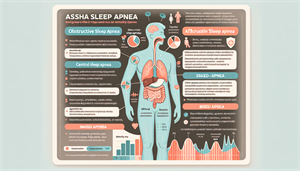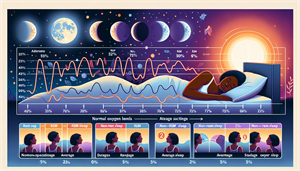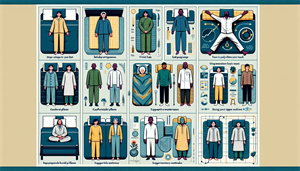
What Are The Chances Of Dying From Sleep Apnea?
Imagine a health condition so insidious that it could potentially steal years off your life, and yet, it occurs when you’re in the most peaceful state - sleep.
This is the reality for those living with sleep apnea, a sleep disorder that not only robs you of restful nights but may also dramatically increase your risk of mortality.
Many people wonder, “What are the chances of dying from sleep apnea?” as they seek to understand the severity of this disorder.
Key Takeaways
Sleep apnea is a serious sleep disorder with different types, primarily obstructive sleep apnea (OSA), central sleep apnea (CSA), and complex sleep apnea, each presenting unique challenges and risks, including elevated mortality if left untreated.
The condition poses immediate dangers like sudden cardiac death due to arrhythmias, as well as long-term health risks such as stroke, heart failure, diabetes, and cognitive impairments, all potentially leading to premature death.
Treatments, especially the use of Continuous Positive Airway Pressure (CPAP) therapy and lifestyle changes like weight loss and exercise, can effectively manage sleep apnea and significantly reduce associated health risks and mortality rates.
Understanding Sleep Apnea and Its Types
Sleep apnea is a sleep disorder characterized by decreased or interrupted breathing patterns during sleep. It manifests in three types: obstructive sleep apnea (OSA), central sleep apnea (CSA), and complex sleep apnea. Each type has its unique characteristics and challenges, contributing to the increased risk of mortality.
Obstructive Sleep Apnea Explained
Obstructive sleep apnea syndrome (OSAS) is defined by the following characteristics: Repetitive closure of the upper airway during sleep, repeated reversible decreases in blood oxygen levels, fragmented sleep, relaxation and narrowing of throat muscles, and interruptions in breathing during sleep. These factors contribute to the symptoms and effects of OSA.
The typical symptoms associated with untreated obstructive sleep apnea can be managed with sleep apnea treatment, which may include continuous positive airway pressure (CPAP) therapy, lifestyle changes, or surgery. Prompt treatment of this condition is necessary to prevent complications.
Central Sleep Apnea: The Less Common Variant
Unlike OSA, central sleep apnea (CSA) is characterized by the brain and respiratory muscles’ inability to properly regulate breathing. This means that the issue is not a physical blockage, but rather a miscommunication between the brain and the muscles that control breathing. The signs and symptoms of central sleep apnea closely resemble those of obstructive sleep apnea.
However, individuals with central sleep apnea may not frequently report daytime sleepiness compared to those with obstructive sleep apnea, which is often linked to cardiovascular disease. Addressing the underlying cause of central sleep apnea may assist in improving sleep quality and mitigating other symptoms and complications associated with CSA. This highlights the need to comprehend one’s type of sleep apnea and secure an accurate diagnosis and treatment.
Complex Sleep Apnea: A Combination of Challenges
Complex sleep apnea is a condition characterized by the combination of obstructive sleep apnea (OSA) and central sleep apnea (CSA). It may develop in certain individuals who are undergoing continuous positive airway pressure (CPAP) sleep apnea treatment for OSA. The estimated prevalence of complex sleep apnea is 5 to 15% of patients with sleep-disordered breathing.
Indications of complex sleep apnea encompass severe fatigue, daytime drowsiness, irritability, profound daytime tiredness, and excessive daytime sleepiness.


